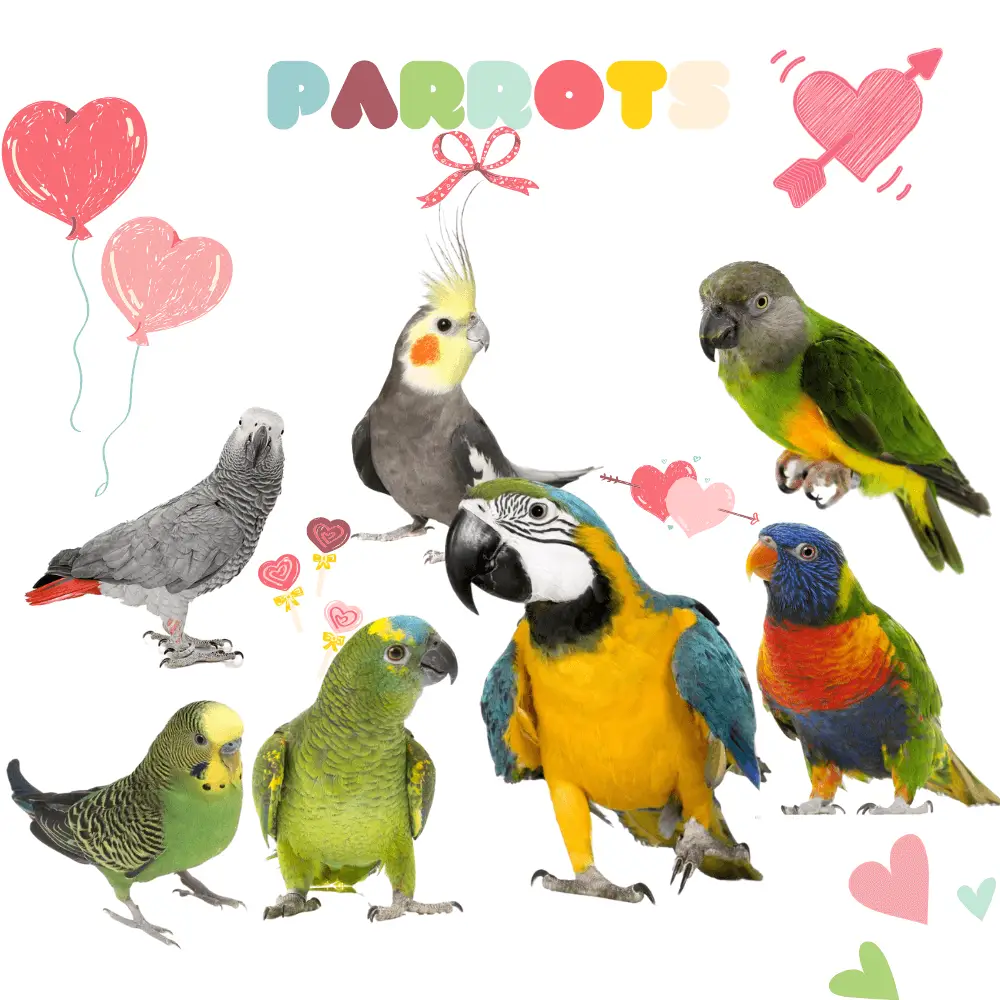Parrots, whatever the species, have always fascinated human beings. The beauty of its plumage, its ability to imitate sounds and speech, and its behavior towards both humans and its fellow creatures are some of the particularities that make it an animal whose breeding (not acting only authorized and non-endangered species) and observation are extremely pleasant. Parrots are very pleasant companions who demand care, respect, and affection.
It is common acceptance to call any bird belonging to the order Psittaciformes parrots. This, therefore, includes parakeets, which are the smallest species and have a long tails.
However, the various organizations establishing classifications in ornithology are based on significantly variable criteria. If we stick to the nomenclature of the CINFO (International Commission of French Names of Birds), for example, only birds of the genera Poicephalus, Psittacus, and Coracopsis are called Parrots. Parakeets, Macaws, Lovebirds, and other Conures are not part of it according to this logic.
According to the Dictionary of the French Academy, the parrot is a ” climbing and subtropical ” bird belonging to the Psittacidae.
Generally speaking, traits common to Parrots are a large hooked beak, bright colors, and the ability to imitate sounds and the human voice.
What are the characteristics of Parrots? How to feed parrot? We these and other questions, we answer you in broad strokes.
Parrots story
The human fascination for the parrot is extremely old. In particular, remains of representations of this bird dating from the pre-Columbian era have been discovered in present-day Peru.
European explorers and settlers soon began importing it from South America and Oceania. However, the popularity of these exotic birds has been devastating for many species, which have also suffered from the destruction of their natural habitat by deforestation. The African grey parrot is one of them.
Trafficking and illegal captures continue to harm wild populations today, even if protective measures have been put in place by governments and organizations.
Parrots food
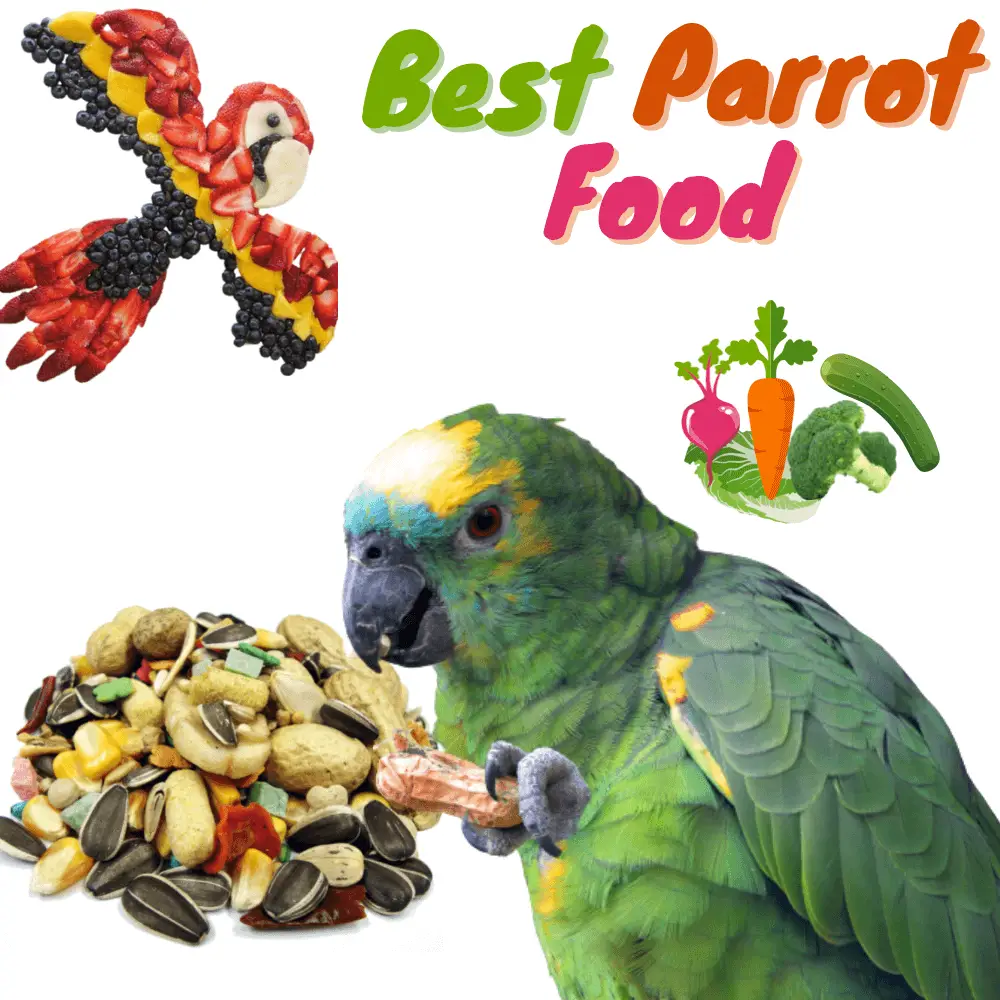
There are good quality seed mixes (millet, safflower, buckwheat, sesame, sunflower, etc.) and extruded seeds on the market, but the Parrot can’t be satisfied with that. To prevent deficiencies and imbalances of all kinds, his diet must be supplemented with fresh and well-washed fruits and vegetables (to eliminate chemical residues), cooked legumes, or even vitamin supplements prescribed by the veterinarian.
The parrot is also fond of nuts, but which must be given sparingly, because fatty: peanuts, almonds, pistachios, Brazil nuts, palm, macadam…
Fresh food should be renewed regularly, as should the water in the drinking troughs, which should be changed twice a day.
Avocado, rhubarb, and table scraps are among the foods not to be given to the Parrot.
Parrots lifespan
The life expectancy of a Parrot varies greatly from one species to another. The smaller ones can live up to 15 years, while the African grey parrot or Macaws reach or exceed 80 years.
Parrots Diseases
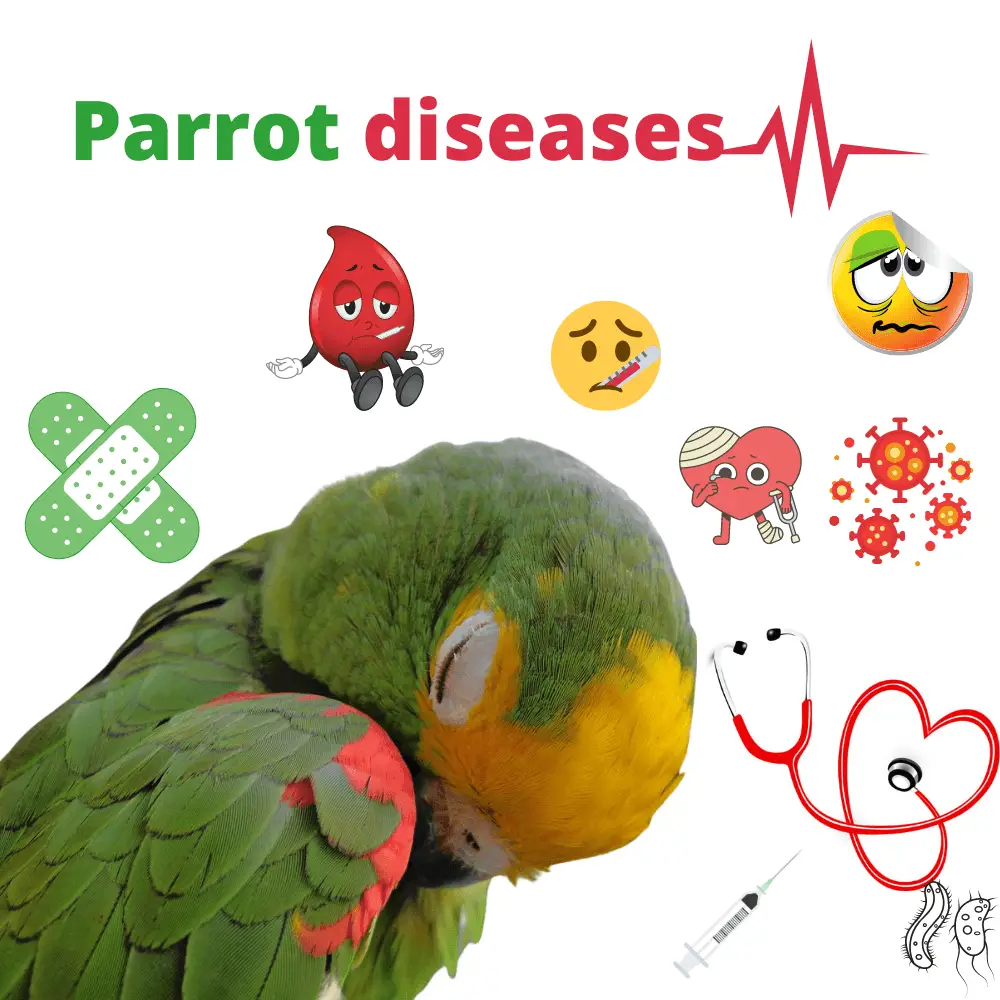
Parrots Diseases: Avian chlamydiosis, called psittacosis, is one of the top health concerns among parrot owners, Chlamydophila psittaci, and are zoonoses. In other words, they can be transmitted to humans.
What is the best parrot for a pet?
All birds, whatever their species, need your presence, your care, and your attention. Some, however, require less maintenance and uptime than others. This is the case with the canary and the zebra finch, among others. If you don’t have a lot of time to devote to your future pet parrot on a daily basis, choose this kind of variety.
If you are more available and are willing to offer it more interactions, you can choose an active and talkative bird such as the Macaws ( Blue and Yellow Macaw, Hyacinth Macaw, etc.) or the Gabon Grey.
Also, choose your pet parrot depending on whether you have children or not. There are species better suited to toddlers, such as the Cockatiel. The latter is known for her calm and affectionate character.
For slightly older children, it is possible to turn to parrots, because of their intelligence and the quality of the interactions they can have with them.
In any case, it is necessary to teach your child to respect the parrot, and not to have fun disturbing it, because intrusions and agitation stress it enormously.
choosing a pet parrot
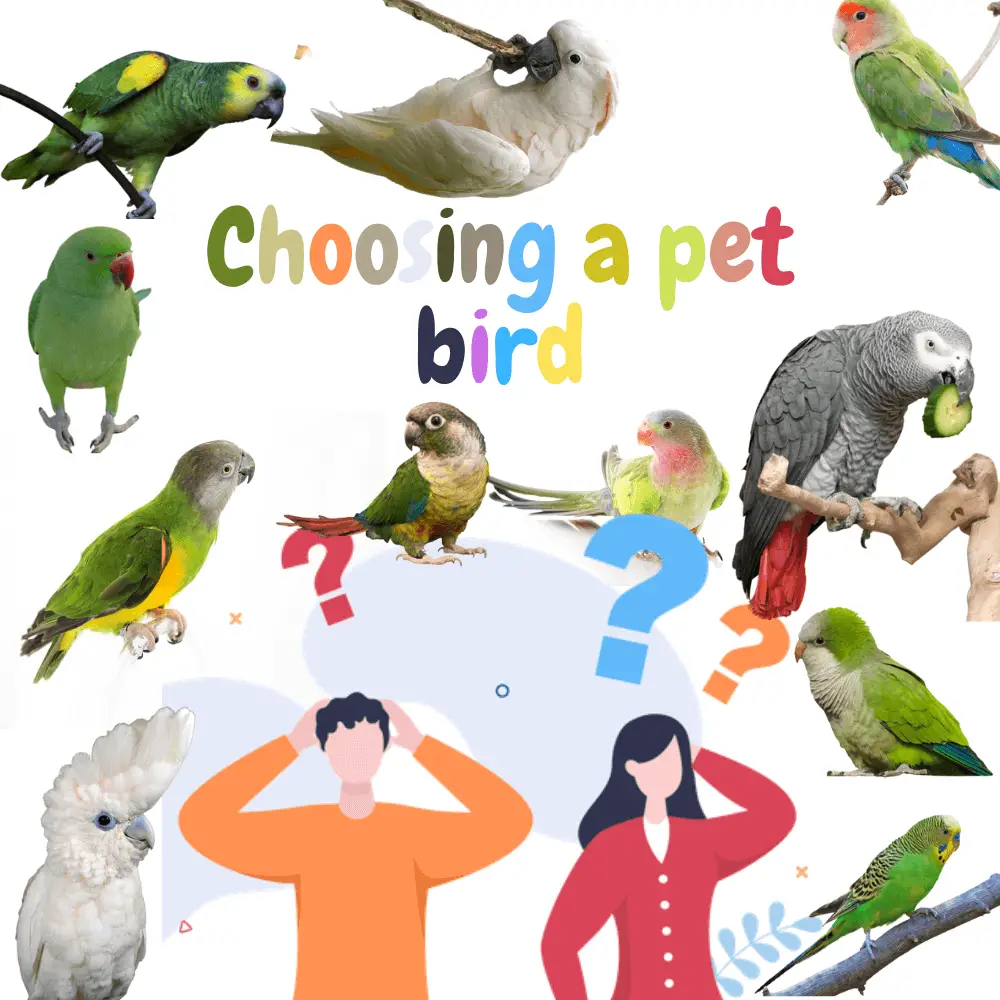
What living environment will you offer your future feathered companion? The challenge, when it comes to choosing a pet parrot, is that there is no incompatibility between, on the one hand, your way of life and your personality, and on the other, the animal’s character, needs, and specificities.
For example, if you are not the type to tolerate unwanted noise, you can orient yourself toward species of birds known to be quieter than others. The Bourke’s Parakeet and the Turquoisine Parakeet are among them. The Kakariki Parakeet also.
But beware, silent or discreet does not mean “mute”. Besides, no bird is complete. Everyone needs to express themselves and communicate, but some do it less intensely and in a less voluminous way than others. Preferences in terms of sounds and songs also come into play.
Space is another criterion to take into account when choosing a pet parrot. If you have enough to install a large aviary, you can turn to larger and more active birds. Otherwise, prefer smaller birds that can make do with smaller cages. It also depends on the number of individuals you plan to breed.
Parrot care
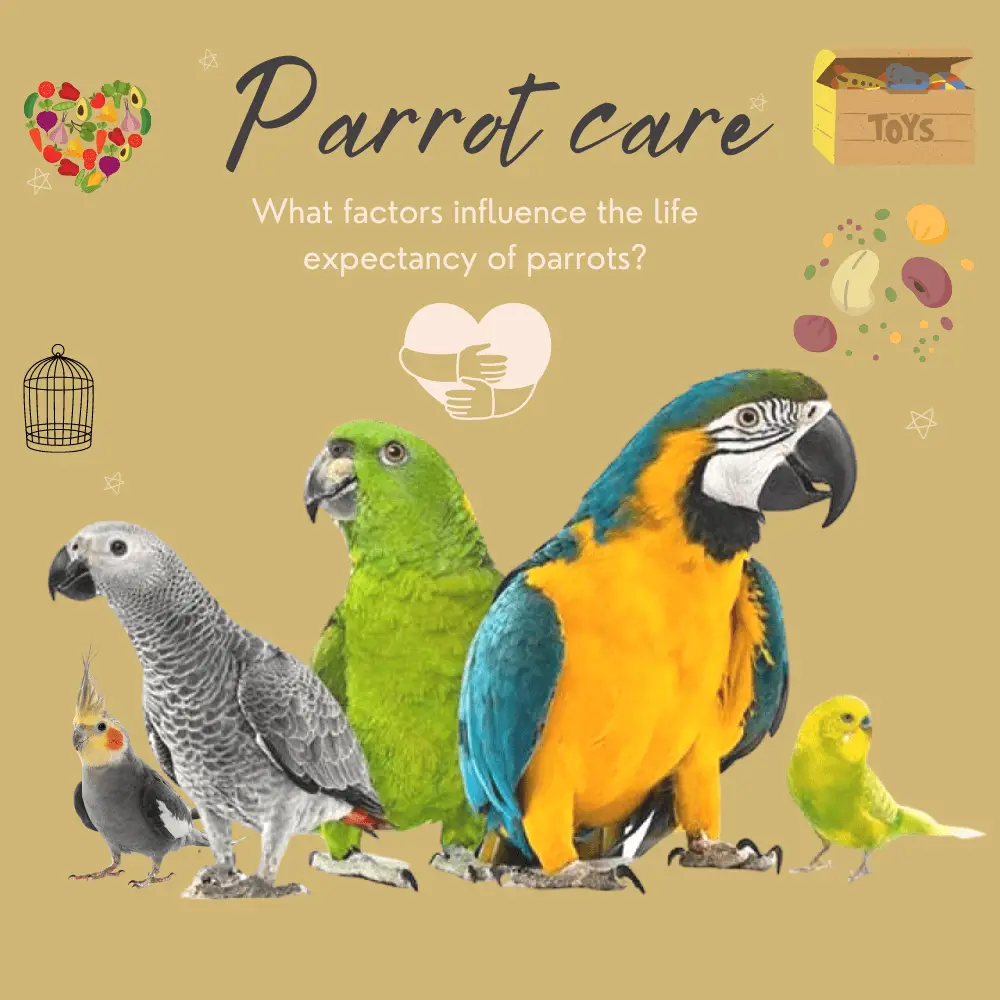
- Clean the cage daily of food scraps (parrots waste food) and excrement. Sponge the perches.
- Disinfect the cage once a month with a suitable product (ask your veterinarian for advice).
- You can clip the wings of large parrots so that they can no longer fly away. The shortened feathers regrow in a few weeks.
- Parrots are birds native to humid regions. you should bathe or shower them in warm water twice a week, To keep their feathers looking waxy and shiny.
- Your parrot must exercise every day: under close supervision, take it out of its cage and play with it in the room (close the windows and the curtains the first few times, and open them gradually so that it understands the presence of windows). Keep in mind that with its powerful beak, the parrot can be very destructive. Some parrots accustomed to a call can be released into a garden.
Parrot Health
Consult a veterinarian promptly if:
- if he has ruffled feathers or even if he is featherless in places,
- if his stools are watery, blood-tinged, or foamy,
- if his nostrils or eyes are runny or have crusts.
Parrots male and female
In most parrots, it is impossible to distinguish between males and females. Only an endoscopy (under anesthesia) or a DNA test (from a few feathers) allows sexing.
The sex of the animals is of little importance if you do not want to breed; you can buy a pair of birds of the same sex. Two parrots of different species can also form a couple, but they cannot reproduce…
Handle a parrot
The easiest way is to accustom the parrot to climb on a stick stretched in front of him or on your arm.
- If you want to catch a big parrot, put a terry towel on its back and wrap it around its body. Hold the head between the thumb and middle finger, with the index finger resting on the top of the head.
- For a small parrot, grasp it in the full hand, wings glued to the body, thumb, and index finger (or index and middle finger) surrounding the base of the neck, palm on the back of the animal, fingers folded over his stomach.
To catch a parrot that has escaped outside, do not run after it: lure it with treats or wait for it to land then water it (you still need a garden hose!) gently until its sodden feathers prevent it from flying.
Parrot price:
The Washington Convention guarantees the protection of endangered plant and animal species. Parrots threatened with extinction fall into category 1, their trade is prohibited even for those born in breeding. The other parrots fall into category 2: their trade is subject to certain breeding rules.
you will need to be in possession of a certificate of competence or a detention permit, Depending on the species of parrots concerned and their number. Check with the prefecture.
Count between 300 and 700$ depending on the size of an equipped cage. The price of birds is very variable: some large parrots can cost more than 2500$!

